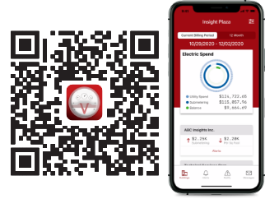6 Hidden Challenges in VRF Billing
VRF billing is often inaccurate. Here's what you need to know to recoup VRF expenses fairly.
Why Your VRF Billing May Be Wrong
Variable refrigerant flow (VRF) systems (also known as VRV for “variable refrigerant volume”) are a very efficient and effective HVAC technology when it comes to heating and cooling. But what you may not know is how inaccurate these systems can be when it comes to billing tenants. Here are six little-known-but-common factors that make it challenging to bill for VRF systems accurately.
1. Lack of transparency
VRF manufacturers use proprietary algorithms to calculate what they say is each tenant’s usage for the billing period. But because the algorithm is not well defined, there’s no transparency in how electricity is apportioned, even when the system is working perfectly. And if it isn’t working perfectly, you can’t tell. Your VRF billing is a black box and digging a black hole for you to pour money into.
2. Delayed reporting
Most VRF manufacturers have “charge or energy calculation” software platforms that aren’t programmed to send real-time energy data.
Instead, owners are expected to log into their charge/energy calculation software monthly to download the energy data for billing tenants.
Unless you have someone sitting at the local PC (normally) provided by the manufacturers to monitor alerts and communication failures, who is going to catch these problems before the bills are prepared?
3. Unverified points
VRF systems are composed of three equally important parts: the indoor (fan coil) units, the outdoor condenser unit that responds to demand from multiple indoor units and moves refrigerant around, and the pipes and cables that connect indoor to outdoor. During installation, which indoor units are programmed to work with which condensers aren’t always documented, which can lead to flawed charges.
Here’s why: The condensers that serve the indoor units also need to have their consumption apportioned to bill accurately for total electricity used for heating or cooling. Clarity on which bank of condensers is serving which fan coil units is essential for accurate billing.
4. No thresholds or baselines
VRF systems are pretty new, especially in larger residential properties, and the industry doesn’t yet have standards for how much consumption is reasonable for a particular use and size. This makes it very difficult for property managers/resident managers to immediately know if the data from the VRF is out of line. We’re developing our own standards so that we can instantly say when a value is higher or lower than is reasonable for that tenant type and space.
5. High tenant fees
Understanding system defaults is critical to understanding how billing is impacted when things go wrong. In the case of VRF, owners need to ask the design engineers and VRF manufacturer what happens to the total kWh recorded for the condensers if the communication from a fan coil unit drops offline. Can the charge/energy calculation software adjust, or does it just allocate the full energy usage to other tenant apartments? In other words, does it automatically default to underbilling the tenant whose unit(s) dropped communication and overbilling everyone else on that system?
6. Inexperience with VRF systems
Billing for electric submetering is not the same as VRF billing. If you’re assuming that your VRF billing data is right on the mark and/or you’re using electricity billing processes to create VRF billing, your invoices will not be accurate.
Recommendations for Accurate VRF Billing
- Don’t assume the billing data from your VRF charge/energy calculation software is correct.
- Have your points validated so you know which indoor units are connected to which external condenser units and submeter those condenser units.
- Start charting usage to develop thresholds for each space type and size so you have something to compare to over time.
- Don’t bill for VRF using the same practices you use to bill for other utilities.
- If you use a third-party firm to prepare your billing packages, hire an experienced submeter billing firm that has engineering background in HVAC as well as electrical submetering.
Interested in improving the efficiency of your facility?
Our blog is full of tips on how to lower your operating expenses and charge back utility costs fairly.
About utiliVisor
Your tenant submetering and energy plant optimization services are an essential part of your operation. You deserve personalized energy insights from a team that knows buildings from the inside out, applies IoT technology and is energized by providing you with accurate data and energy optimization insights. When you need experience, expertise, and service, you need utiliVisor on your side, delivering consistent energy and cost-saving strategies to you. What more can our 40 years of experience and historical data do for you? Call utiliVisor at 212-260-4800 or visit utilivisor.com

